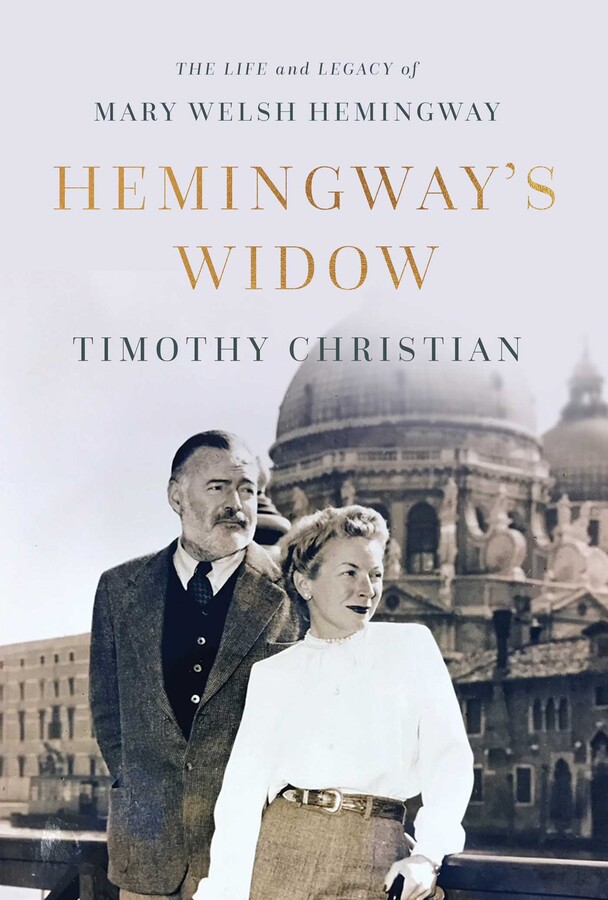Hemingway was married four times: to Hadley Richardson in 1921, to Pauline Pfeiffer in 1927, to Martha Gellhorn in 1940 and to Mary Welsh in 1946. In every swap, he divorced his current wife for her successor. Mary wrote her own memoir, How It Was, after Hemingway’s death in 1961. Now Timothy Christian has written a well-researched and intensely detailed look at the life of a fascinating woman who became the steward of Hemingway’s literary estate and reputation long before he died.
Mary Welsh was born in 1908 and raised in rural Minnesota. As soon as she could, she escaped to Chicago and college at Northwestern but dropped out when she married a fellow student in 1930. The marriage was brief, and in that same year Mary found work editing The American Florist for $75 a week — excellent money during the Great Depression — and soon moved on to the society page of the Chicago Daily News. When she met a fellow Daily News reporter, Leicester Hemingway, she confessed that she read everything his big brother Ernest wrote and wanted to know more about him. Be careful what you wish for.
By 1937, Mary was in London writing for the Daily Express — courtesy of its owner Lord Beaverbrook, who was taken with her. After proving her worth with a July profile of Amelia Earhart, who had vanished over the Pacific earlier that summer, Mary began reporting on Hitler and the march toward war. She married a fellow journalist, Noel Monks, but the union was compromised by his absence in Singapore and her penchant for love affairs with left-wing politicians and writers; she described wartime London as “a Garden of Eden” for single women.
Ernest Hemingway came to the British capital for the first time in May 1944, as the RAF correspondent for Collier’s Weekly. Hemingway and Mary met at lunch soon after he arrived, and he immediately asked to see her again. Hemingway told her, “I want to marry you. You are very alive. You’re beautiful like a May fly.”
Mary was thirty-six and Hemingway was nine years older. He was smitten, and she was flattered with the attention from such a literary celebrity. In mid-June, she and Hemingway went to bed together, but “Mr. Scrooby” — which I regret I now know was Hemingway’s nickname for his penis — demurred. Hemingway continued courting her in person, when he was infrequently in London, and, more successfully, with letters from Europe, where he was embedded with the Allied forces. They became lovers in Paris in August 1944, as the Allies rolled in and reclaimed the city. Hemingway took her to the places he and Hadley had gone twenty years before. His friend Pablo Picasso agreed to Ernest’s request to paint Mary nude, but she refused to go.
